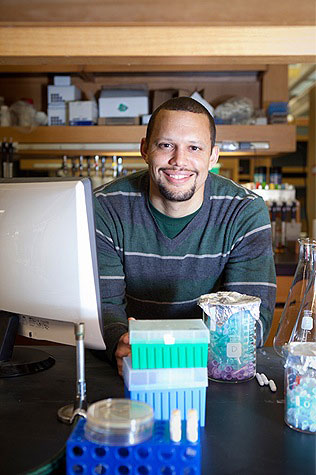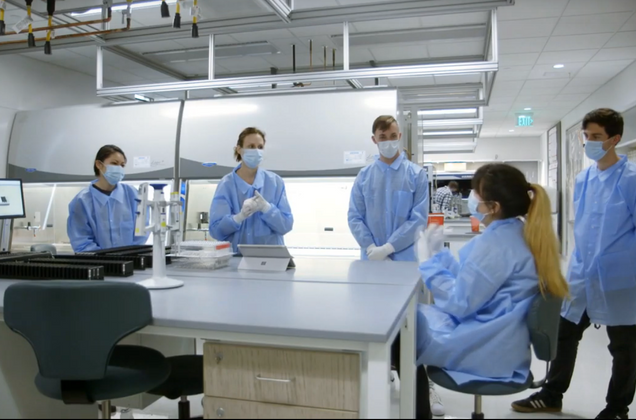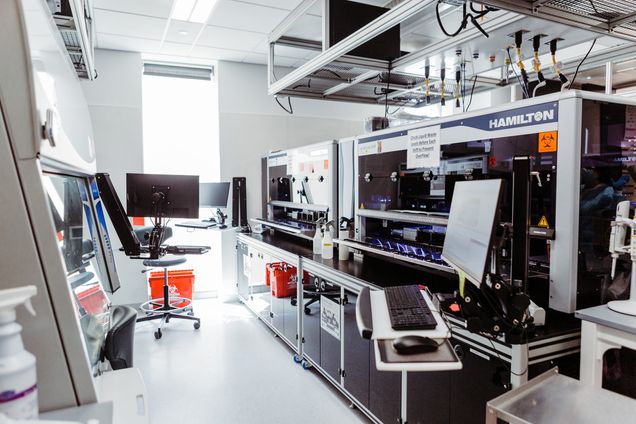BU’s Secret Weapon Against COVID-19
By Allison Kleber
The start of the 2020-21 school year across the United States was almost immediately marred by reports of rapid-onset, uncontrolled outbreaks of the novel coronavirus on university and college campuses, causing many to question the choice to resume residential study. In this climate of uncertainty, Boston University was determined to succeed where other institutions had failed – and midway through the fall semester, the University is living up to its promises. Even well into the global “second wave,” there have been no breaking news stories of runaway community spread at BU, no on-campus spaces shuttered due to rapidly-multiplying clusters of cases. Boston University has seen 249 positive tests*, total, since late July; less than half the numbers some schools in Georgia and North Carolina were seeing in just the first couple of weeks of the semester.

The secret of BU’s success isn’t difficult to identify. In addition to rigorous social distancing and contact tracing protocols, the Charles River campus boasts its very own in-house, high-capacity testing facility. Thousands of tests are administered and processed every day, and results transmitted within about 24 hours. Every student, faculty or staff member is expected to go through this process 1-2 times per week, providing comprehensive data at a fast enough turnaround to intervene before an infection or two can balloon into a hot spot.
But how is this possible, when the lack of adequate testing capacity has dogged the United States’ efforts at curbing the pandemic since day one? The answer may surprise you.
It all comes down to the robots.
Professor Douglas Densmore is a member of the Electrical and Computer Engineering department, and the lead PI of the Design, Automation, Manufacturing, and Prototyping Laboratory, or DAMP Lab. DAMP specializes in developing reproducible, scalable automated processes for synthetic biology research – in other words, they design and create the means to process molecular and biomedical materials quickly, accurately, and in large numbers, using robots which are specially designed to carefully handle and manipulate liquid samples.

With the right software configuration, testing protocols, and detection process, DAMP’s robots can turn around an exponentially larger number of tests per day than any team of human technicians. And when he and co-PI Catherine Klapperich (of the Precision Diagnostics Center) assembled their team in May, they had 2-3 months to put together a lab that could do just that, before the campus would fill with students, staff and fellow professors who would rely on those test results for their safety. That timeline was, as DAMP Lab Manager Samuel Oliveira put it, “a little bit crazy – but we took the challenge.”
Of course, there was more to the pressure than deadlines. The team was conscious that their colleagues and classmates were counting on them, that their work would have an immediate impact on their own community. The Clinical Testing Laboratory was fully up and running by the end of the summer, and ultimately “it was just an incredibly rewarding experience to have been involved in something so impactful;” a sentiment shared by one of the team’s Bioautomation Specialists, Dany Fu. That impact is visible every day on campus, and it all starts behind the scenes in the lab.
The eight Hamilton liquid handling robots that form the core of the new Testing Lab perform what is largely considered to be the gold standard in coronavirus testing: the molecular RT-qPCR (reverse transcription polymerase chain reaction) test, used to isolate and identify the virus’s unique genetic material. The robots are loaded with individual self-collected anterior nares specimens, preserved in a sterile saline solution; they must extract the necessary genetic material from the sample, add chemicals to assist with detection, and run the samples through the thermocycler, heating them to multiply the DNA millions or billions of times, until the quantity is high enough that it can be accurately detected and analysed.
“The challenge,” according to Professor Densmore, “”was tuning the robots to the actual liquids being used, calibrating the movement of the robots, and accounting for labware variations.” A delicate task, but worth it for the efficiency it went on to produce. With the help of Professor Densmore’s tuned and calibrated robots, the Lab can process nearly 6,000 individual tests each day.

That kind of turnaround is what makes the University’s rigorous testing requirements for each person on campus feasible; and with a molecular testing protocol, capable of detecting asymptomatic and early-stage infections, the virus can’t sneak its way through an unsuspecting population quite so easily. Effective, widespread testing isn’t a perfect preventative, of course, but it’s a powerful tool, and the proof of that is clear in BU’s continued success at keeping the number of infections so low.
BU students, faculty and staff have settled into the regular rhythm of the testing cycle, visiting four collection sites around campus. One of these is located right in the Rajen Kilachand Center for Integrated Life Sciences, home of DAMP Lab and its team of clinicians, researchers and robots. So far, everyone–human and automaton alike–is staying the course, and proving that with the right resources and a bunch of determined engineers, academic life really can go on in the midst of a pandemic.
*out of a total of 317,634 COVID-19 tests administered, July 27 – November 1